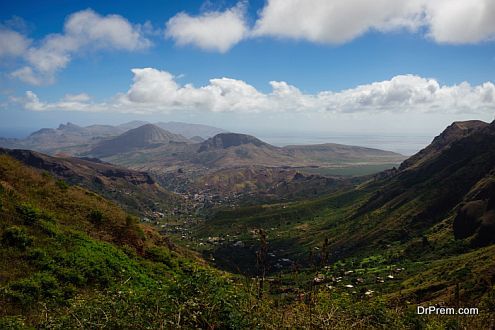Santo Antao, also known as Sontonton, is the largest island among the Barlavento islands of Cape Verde. Diogo Afonso explored the island in 1462 and it was first inhabited in 1548. It is made from the material left from volcanic eruption and consists of Topo de Coroa, which is the tallest mountain with a height of 1,979m and Pico da Cruz at 1,585m is the second tallest mountain. A mountain range divides the island into northern and southern parts. The island features various beaches and fishing regions lying near to the Tarrafal de MonteTrigo. The main streams flowing through the island are Ribeira das Bras and Ribeira do Passo. Being a mountainous island, it is made of basalt and consists of calderas volcanoes. Volcanologists have observed a continuous rise in the temperatures of water, which depicts the risk of an upcoming eruption.
The island is considered as of economic importance and various industries such agriculture and fishing. Products like yams, cassava, sugarcane, mangoes and grain are plentiful here. Plantations are done in terraces, as the other part of the island is mountainous. Activities like trekking and hiking can be done on the island.


